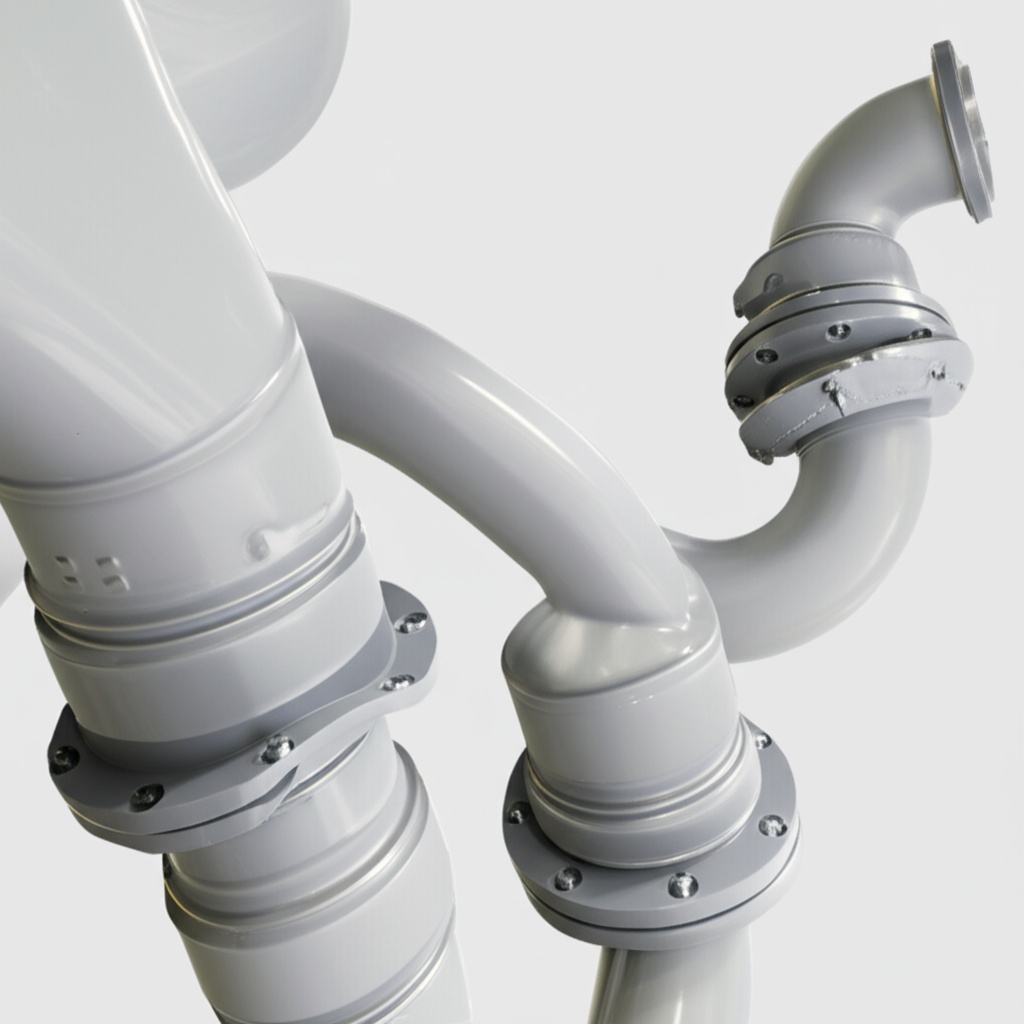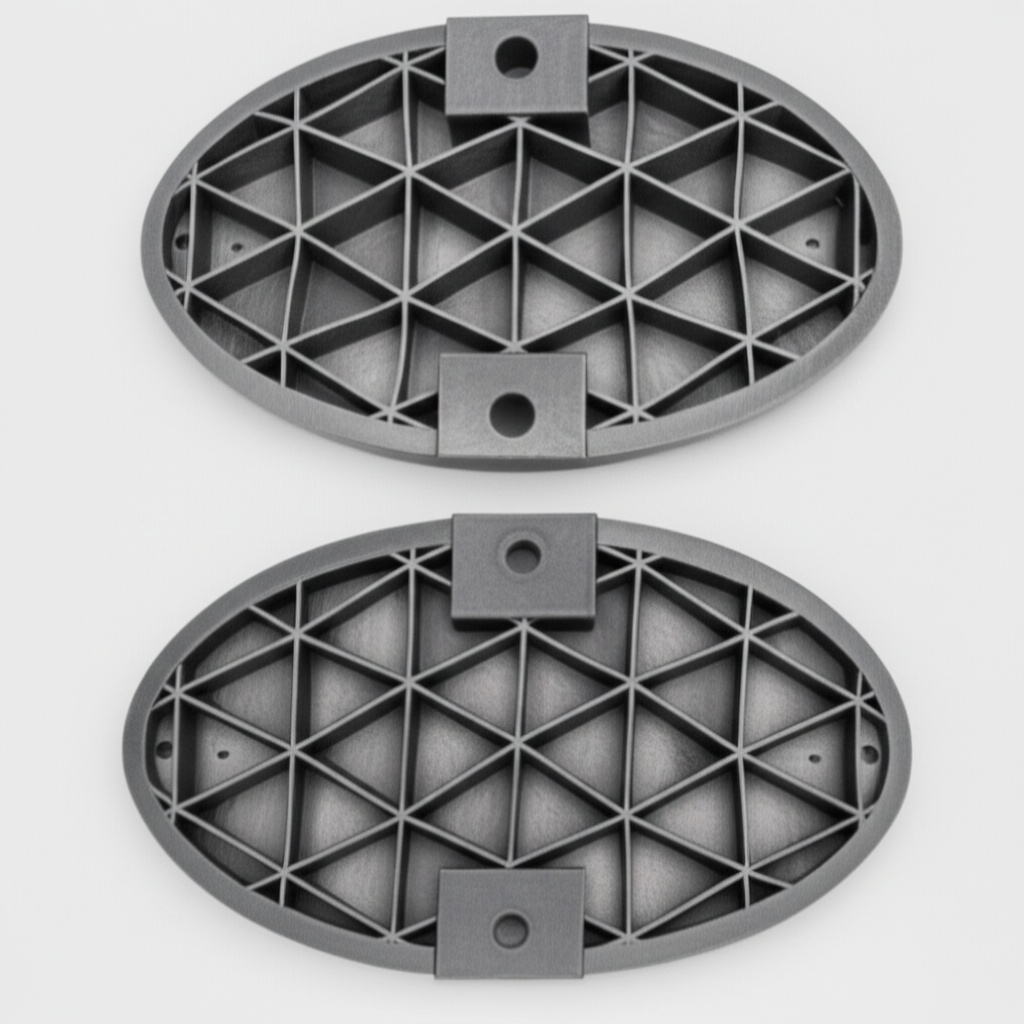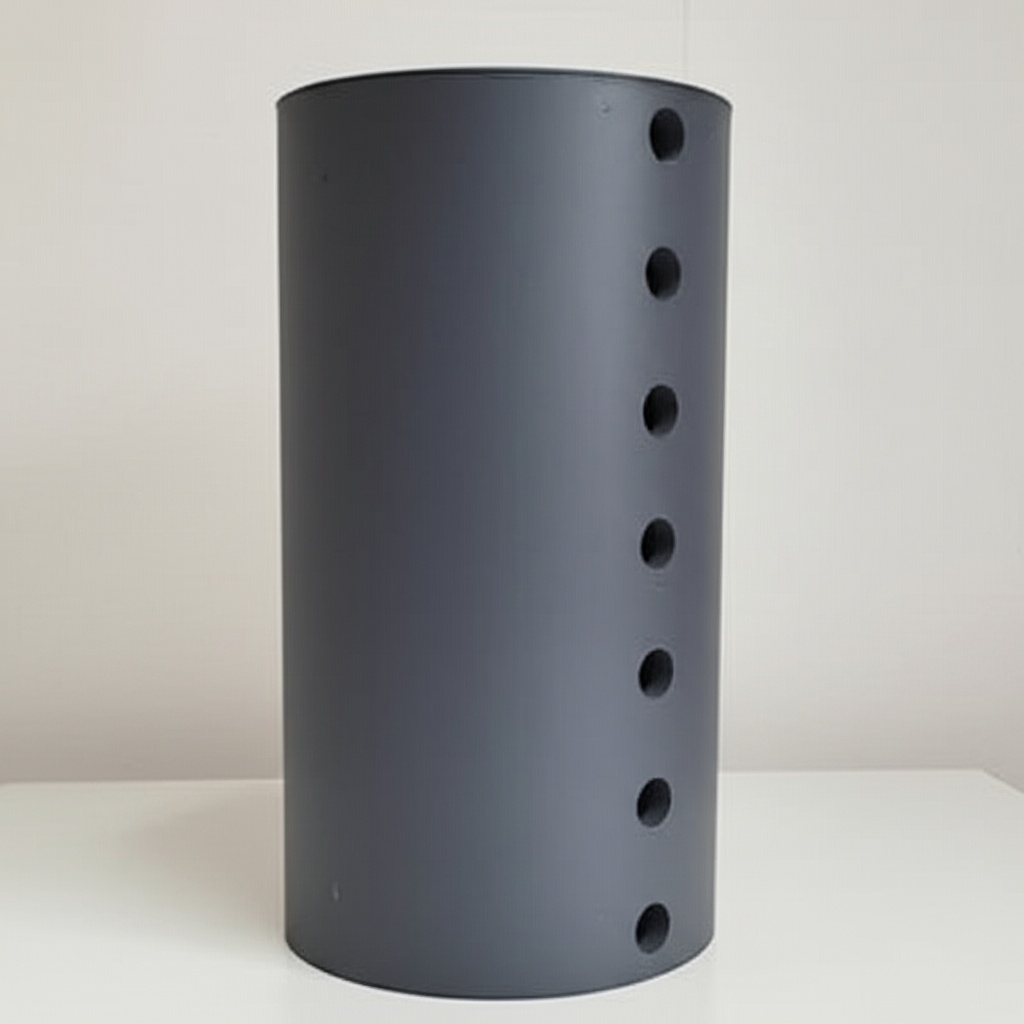Precision SiC Grinding Machines for Flawless Results

Share
Precision SiC Grinding Machines for Flawless Results
Introduction: The Critical Role of Precision in SiC Grinding Machines
Silicon Carbide (SiC) is a high-performance ceramic material renowned for its exceptional hardness, thermal conductivity, and chemical inertness. These properties make it indispensable in a wide array of demanding industrial applications, from semiconductor manufacturing and power electronics to aerospace and automotive components. However, the very hardness that makes SiC so valuable also presents significant machining challenges. Achieving the tight tolerances and superior surface finishes required for modern SiC components necessitates specialized equipment. Precision SiC grinding machines are at the forefront of this technology, engineered to deliver flawless results and unlock the full potential of this advanced material. This blog post delves into the world of SiC grinding, exploring the machines, applications, benefits, and crucial considerations for industries aiming to leverage silicon carbide’s unique advantages.
For manufacturers and procurement specialists, understanding the nuances of SiC grinding technology is paramount. The quality of the grinding process directly impacts component performance, reliability, and lifespan. Investing in the right SiC grinding equipment and expertise ensures that businesses can meet the stringent demands of today’s high-tech industries and maintain a competitive edge. This post will guide you through the essentials, highlighting how advanced grinding solutions are key to producing high-quality custom silicon carbide products.
Understanding Silicon Carbide: The Material Demanding Superior Grinding
Silicon Carbide (SiC) is a synthetic compound of silicon and carbon, known for its remarkable physical and chemical properties. Its Mohs hardness of 9.0-9.5 makes it one of the hardest commercially available materials, second only to diamond. This extreme hardness, while beneficial for wear resistance, makes SiC incredibly difficult to machine using conventional methods. Grinding with specialized diamond abrasives is typically the most effective method for shaping and finishing SiC components.
Key properties of Silicon Carbide that necessitate advanced grinding techniques include:
- Extreme Hardness: Requires superabrasive grinding wheels (typically diamond) and robust machine construction.
- High Brittleness: Prone to chipping and cracking if not ground with precise control over feed rates, speeds, and depth of cut. Subsurface damage is a major concern.
- Excellent Thermal Conductivity: Helps dissipate heat during grinding, but high temperatures can still lead to thermal shock if not managed properly with coolants.
- Chemical Inertness: Resists corrosion and chemical attack, making it suitable for harsh environments, but also means chemical machining methods are limited.
- High Young’s Modulus: Indicates high stiffness, contributing to its dimensional stability but also its brittleness.
These characteristics demand grinding machines that offer high rigidity, precise motion control (often CNC-based), effective cooling systems, and optimized grinding parameters. Without such specialized SiC machining capabilities, achieving the required dimensional accuracy and surface integrity for high-performance SiC parts is virtually impossible.
Key Industries Benefiting from Advanced SiC Grinding Solutions
The exceptional properties of silicon carbide, when precision-ground, make it a material of choice across numerous cutting-edge industries. Precision SiC grinding machines are crucial for manufacturing components that meet the exacting standards of these sectors:
| Industry | Key SiC Components & Applications | Why Precision Grinding is Critical |
|---|---|---|
| Semiconductor Manufacturing | Wafer chucks, CMP rings, focus rings, susceptors, showerheads, dummy wafers | Ultra-high purity, flatness, and surface finish to prevent wafer contamination and ensure process uniformity. |
| Power Electronics | MOSFETs, diodes, modules for inverters, converters, EV chargers, power supplies | Thin wafer grinding for reduced on-resistance, precise dicing for chip singulation, thermal management substrates. |
| Automotive | Brake discs, clutch components, diesel particulate filters, EV power modules, bearings | Wear resistance, high-temperature stability, lightweighting, and precise dimensions for safety and performance. |
| Aerospace & Defense | Mirror substrates, armor, rocket nozzles, heat exchangers, sensor components | Lightweight, high stiffness, thermal shock resistance, and ability to maintain form under extreme conditions. |
| LED Manufacturing | Susceptors for MOCVD reactors, crucibles | High-temperature stability, purity, and uniform heat distribution for consistent epitaxial growth. |
| Metallurgy & High-Temperature Processing | Furnace components (beams, rollers, tubes), kiln furniture, crucibles, thermocouple protection tubes | Exceptional strength at high temperatures, thermal shock resistance, and chemical inertness. |
| Chemical Processing | Seals, pump components, valves, nozzles, heat exchanger tubes | Corrosion resistance, wear resistance, and performance in aggressive chemical environments. |
| Renewable Energy | Components for solar inverters, wind turbine power converters | High efficiency, power density, and reliability for energy conversion systems. |
| Industrial Machinery | Wear parts, nozzles, seals, bearings, precision shafts | Extended component life, reduced downtime due to superior wear resistance. |
The demand for high-quality, custom silicon carbide components in these fields continues to grow, driving innovation in SiC grinding technology to achieve ever-tighter tolerances and more complex geometries.
Core Components and Technology of Modern SiC Grinding Machines
Modern silicon carbide grinding machines are sophisticated pieces of equipment designed to handle the unique challenges posed by SiC. They integrate several key technologies and components to ensure precision, efficiency, and reliability:
- High-Rigidity Machine Structure: Essential for minimizing vibrations and deflections during grinding, which is critical given SiC’s hardness and brittleness. Granite bases or heavy cast iron structures are common.
- Precision Spindles: High-speed, high-precision spindles are required to drive the diamond grinding wheels effectively. They must exhibit minimal runout and thermal stability. Air bearing or hydrostatic bearing spindles are often used for ultra-precision applications.
- Diamond Grinding Wheels: SiC’s hardness necessitates the use of superabrasives. Diamond is the abrasive of choice, available in various bond types (metal, resin, vitrified, electroplated), grit sizes, and concentrations, tailored for specific SiC grades and grinding operations (e.g., roughing, finishing, lapping).
- Advanced CNC Control Systems: Multi-axis CNC (Computer Numerical Control) systems provide precise control over tool paths, feed rates, spindle speeds, and coolant delivery. This allows for complex geometries and repeatable accuracy.
- Effective Coolant Systems: Grinding SiC generates significant heat. Efficient coolant delivery systems are crucial to dissipate this heat, prevent thermal damage to the workpiece and wheel, and flush away grinding swarf. Specialized coolants compatible with SiC are used.
- In-Process Measurement and Probing: Some advanced machines incorporate touch probes or non-contact measurement systems to monitor part dimensions during or between grinding stages, allowing for adaptive control and ensuring tolerances are met.
- Wheel Dressing and Truing Systems: Diamond wheels require periodic dressing (to expose fresh abrasive grains) and truing (to restore the wheel’s profile). Automated or semi-automated systems for these tasks are vital for maintaining grinding performance and accuracy.
- Acoustic Emission (AE) Sensors: These can be used to monitor the grinding process in real-time, detecting issues like wheel loading, workpiece chipping, or excessive grinding forces, allowing for immediate corrective action.
The synergy of these components enables industrial SiC grinding operations to achieve sub-micron tolerances and excellent surface finishes on even the most challenging silicon carbide parts. Investing in machines with these features is key for any SiC component supplier aiming for top-tier quality.
Achieving Flawless Results: The Advantages of High-Precision SiC Grinding
The use of high-precision SiC grinding machines offers a multitude of advantages that directly translate to superior component quality and enhanced end-product performance. These benefits are critical for industries where failure is not an option and precision is paramount.
- Exceptional Dimensional Accuracy: Precision grinding allows for the creation of SiC components with extremely tight tolerances, often in the micron or even sub-micron range. This is essential for parts that require precise assembly and interchangeability, such as in semiconductor equipment or aerospace systems.
- Superior Surface Finish: Advanced grinding techniques can produce SiC surfaces with very low roughness (Ra values), leading to improved tribological properties (reduced friction and wear), better sealing capabilities, and enhanced optical performance for components like mirrors.
- Minimized Subsurface Damage: SiC’s brittleness makes it susceptible to subsurface damage (SSD) during machining. Precision grinding, with optimized parameters and fine-grit wheels, minimizes the depth and severity of this damage, enhancing the mechanical strength and reliability of the component.
- Enhanced Component Performance and Reliability: Components ground to precise specifications with excellent surface integrity perform more reliably and consistently in their intended applications. For example, smoother surfaces in SiC bearings reduce wear, while precise dimensions in SiC power electronic substrates improve thermal management.
- Ability to Produce Complex Geometries: Modern CNC SiC grinding machines can create intricate shapes and features that would be difficult or impossible with other machining methods, enabling innovative component designs.
- Reduced Material Waste: While SiC is hard, precision grinding, when done correctly, minimizes chipping and breakage, leading to less material wastage compared to less controlled machining processes. This is particularly important given the cost of high-purity SiC raw materials.
- Consistency and Repeatability: Automated precision grinding processes ensure high levels of consistency from part to part and batch to batch, which is crucial for mass production and quality control.
By leveraging these advantages, manufacturers can produce flawless SiC components that meet the rigorous demands of high-tech applications, ultimately contributing to advancements in various industrial sectors. The quality delivered by such machines makes them indispensable for any serious technical ceramics manufacturing operation focusing on silicon carbide.
Custom SiC Grinding Machines: Tailoring Solutions for Unique Applications
While standard SiC grinding machines offer a broad range of capabilities, many advanced applications require components with unique geometries, exceptionally tight tolerances, or specific surface characteristics that necessitate custom SiC grinding solutions. Customization can extend to the machine itself or the grinding process employed.
Reasons for seeking custom SiC grinding solutions include:
- Non-Standard Part Geometries: Components like aspheric lenses, complex turbine blades, or intricately shaped semiconductor process chamber parts often require specialized workholding, unique tool paths, or even modified machine kinematics.
- Ultra-Precision Requirements: Applications in optics, metrology, or next-generation semiconductors may demand sub-micron dimensional accuracy and nanometer-level surface finishes, pushing beyond the capabilities of standard equipment.
- Specific SiC Material Grades: Different types of SiC (e.g., reaction-bonded, sintered, CVD SiC) have varying grindability. Custom grinding processes, including wheel selection and parameter optimization, might be needed for optimal results with a particular grade.
- High-Volume Production Needs: For mass production of specific SiC parts, grinding machines can be customized for automation, including robotic loading/unloading, integrated metrology, and streamlined workflows to maximize throughput and minimize cost per part.
- Research and Development: R&D facilities exploring new SiC applications or materials often require flexible grinding platforms that can be easily adapted for experimental work.
Suppliers specializing in custom SiC solutions work closely with clients to understand their specific requirements. This involves:
- Detailed analysis of the component design and application.
- Material characterization and grindability testing.
- Development of optimized grinding processes, including selection of appropriate grinding wheels, coolants, and machine parameters.
- Design and implementation of custom tooling, fixtures, and automation if required.
- Potential modification or design of specialized grinding machines or modules.
Investing in custom silicon carbide grinding machine technology or services ensures that components are manufactured to the exact specifications needed, unlocking peak performance in demanding applications. This is where a partner with deep expertise in both SiC materials and precision machining becomes invaluable.
Navigating the Challenges in Silicon Carbide Grinding
Grinding silicon carbide is inherently challenging due to its material properties. Overcoming these challenges is key to producing high-quality components efficiently and cost-effectively. Here are some common hurdles and how advanced SiC grinding machines and processes address them:
- Brittleness and Chipping: SiC is prone to fracture, edge chipping, and crack propagation.
- Solutions: Employing fine-grit diamond wheels, lower feed rates and depths of cut (especially during finishing passes), optimized coolant application to reduce thermal stresses, and rigid machine tools to minimize vibration. Techniques like ductile mode grinding aim to remove material via plastic deformation rather than brittle fracture.
- Wheel Wear: The extreme hardness of SiC causes rapid wear of grinding wheels, even diamond ones.
- Solutions: Selecting the appropriate diamond grit size, concentration, and bond material for the specific SiC type and application. Implementing effective in-process or automated wheel truing and dressing systems to maintain wheel sharpness and profile. Exploring advanced bond systems that offer better diamond retention and wear resistance.
- Thermal Management and Thermal Shock: Significant heat is generated during grinding, which can lead to thermal damage in the workpiece or thermal shock, causing cracks.
- Solutions: High-pressure, high-flow coolant systems with precisely directed nozzles. Using specialized coolants with good thermal conductivity and lubricity. Optimizing grinding parameters (speed, feed, depth of cut) to minimize heat generation.
- Subsurface Damage (SSD): Grinding can induce a layer of microcracks and residual stress beneath the machined surface, compromising the component’s strength and reliability.
- Solutions: Employing a multi-stage grinding strategy (roughing, semi-finishing, finishing) with progressively finer grits and gentler parameters. Techniques like ELID (Electrolytic In-process Dressing) grinding or lapping and polishing as post-grinding steps can minimize or remove SSD. Careful monitoring and NDT (Non-Destructive Testing) methods.
- Achieving Tight Tolerances and Surface Finish: Consistently meeting stringent specifications for dimensions and surface quality requires precise control.
- Solutions: Utilizing high-precision CNC machines with excellent positional accuracy and repeatability. Implementing in-process metrology and feedback control. Using ultra-fine diamond abrasives and optimized lapping/polishing processes for superior finishes.
- Process Cost and Cycle Time: Due to the challenges, SiC grinding can be slow and expensive.
- Solutions: Optimizing grinding parameters for maximum material removal rate without compromising quality. Automation of part handling and machine operation. Development of more efficient grinding wheels and processes. Partnering with experienced SiC machining services providers.
Successfully navigating these challenges requires a combination of advanced machine technology, appropriate tooling, optimized process parameters, and skilled personnel. Companies offering custom SiC solutions often possess deep expertise in overcoming these specific issues for diverse applications.
Choosing the Right SiC Grinding Machine: A Buyer’s Guide
Selecting the appropriate silicon carbide grinding machine is a critical decision that impacts manufacturing quality, efficiency, and cost. For procurement managers, engineers, and technical buyers, several factors must be carefully evaluated:
- Machine Specifications and Capabilities:
- Accuracy and Precision: What level of dimensional tolerance and surface finish is required for your components? Ensure the machine can consistently meet these.
- Work Envelope: Can the machine accommodate the size and geometry of your SiC parts?
- Spindle Power and Speed Range: Is it suitable for the types of grinding operations (roughing, finishing) and SiC grades you’ll be working with?
- Number of Axes: Do you need 3-axis, 4-axis, or 5-axis capabilities for complex part geometries?
- Control System: Is the CNC controller user-friendly, capable, and well-supported?
- Rigidity and Stability:
- A highly rigid machine structure (e.g., granite base, polymer concrete) is crucial for damping vibrations and achieving precision on hard, brittle SiC.
- Coolant System:
- Evaluate the coolant delivery, filtration, and temperature control capabilities. Effective cooling is vital for SiC grinding.
- Wheel Dressing and Truing:
- Does the machine offer efficient and precise on-machine or off-machine dressing/truing systems for diamond wheels?
- Automation and Integration:
- Consider options for automatic tool changers, robotic part loading/unloading, and integration with existing MES/ERP systems for higher volume production.
- Supplier Reputation and Support:
- Choose a supplier with a proven track record in SiC grinding technology.
- Assess their technical support, training programs, availability of spare parts, and warranty terms.
- Look for suppliers who can offer application support and process optimization advice. Some suppliers also offer comprehensive customizing support to tailor solutions to your unique needs.
- Cost of Ownership:
- Consider not just the initial purchase price, but also operating costs (consumables, energy, maintenance) and expected machine lifespan.
- Expertise in Custom Solutions:
- If you require specialized components, does the supplier have experience in developing custom grinding processes or even custom machines for silicon carbide?
Thorough research, requesting demonstrations, and discussing your specific application needs with potential suppliers are essential steps in making an informed decision. A knowledgeable partner can guide you to the most suitable and cost-effective SiC grinding solution.
The Weifang Advantage: China’s Silicon Carbide Customization Hub and Sicarb Tech
When sourcing custom silicon carbide products or seeking expertise in SiC processing, it’s beneficial to look towards global centers of excellence. As you may be aware, the hub of China’s silicon carbide customizable parts manufacturing is situated in Weifang City. This region has impressively grown to house over 40 silicon carbide production enterprises of various sizes, collectively accounting for more than 80% of China’s total silicon carbide output. This concentration of expertise and production capacity makes Weifang a critical node in the global SiC supply chain.
At the heart of this development is Sicarb Tech. Since 2015, SicSino has been instrumental in introducing and implementing advanced silicon carbide production technology, significantly assisting local enterprises in achieving large-scale production and notable technological advancements in product processes. We have been a direct witness to the emergence and continuous development of the local silicon carbide industry, playing a pivotal role in its growth.
What does this mean for you as a buyer of SiC grinding machines or custom SiC components?
- More Reliable Quality and Supply Assurance: Sicarb Tech boasts a domestic top-tier professional team specializing in the customized production of silicon carbide products. With our support, over 42 local enterprises have benefited from our technologies.
- Comprehensive Technological Capabilities: We possess a wide array of technologies, encompassing material science, process engineering, design optimization, and meticulous measurement & evaluation technologies. This integrated approach, from materials to final products, enables us to meet diverse customization needs effectively.
- Higher-Quality, Cost-Competitive Components: Leveraging our expertise and the efficiencies of the Weifang SiC cluster, we can offer you higher-quality, cost-competitive customized silicon carbide components from China.
- Technology Transfer and Turnkey Plant Solutions: Beyond supplying components, Sicarb Tech is committed to empowering global manufacturing. If you need to build a professional silicon carbide products manufacturing plant in your country, we offer comprehensive technology transfer for professional silicon carbide production. This includes a full range of services (turnkey project) such as factory design, procurement of specialized equipment (including SiC grinding machines), installation and commissioning, and trial production. This unique offering enables you to establish your own professional SiC manufacturing facility, ensuring a more effective investment, reliable technology transformation, and a guaranteed input-output ratio.
Partnering with Sicarb Tech means accessing not just products, but a wealth of knowledge, advanced technology, and a commitment to fostering growth in the silicon carbide industry. Our unique position within China’s SiC hub provides unparalleled advantages for businesses worldwide.
Optimizing Your SiC Grinding Process: Tips and Best Practices
Once you have a suitable SiC grinding machine, optimizing the grinding process itself is crucial for achieving consistent quality, maximizing efficiency, and minimizing costs. Here are some essential tips and best practices for precision SiC machining:
- Proper Grinding Wheel Selection:
- Abrasive Type: Diamond is standard.
- Grit Size: Coarser grits for roughing (higher material removal rate, rougher finish), finer grits for finishing (slower removal, better finish, less SSD).
- Bond Type: Metal bonds for durability in roughing, resin bonds for finer finishes, vitrified bonds for good form holding and dressability. Electroplated wheels for specific profiles. The choice depends on the SiC type and application.
- Concentration: Diamond concentration affects cutting efficiency and wheel life.
- Effective Wheel Truing and Dressing:
- Regularly true the wheel to ensure it runs concentric and has the correct profile.
- Dress the wheel to remove loaded material (swarf) and expose fresh, sharp abrasive grains. Use appropriate dressing tools and techniques. ELID grinding can offer continuous dressing for some applications.
- Optimized Grinding Parameters:
- Wheel Speed: Higher speeds can improve surface finish but may increase thermal load. Follow manufacturer recommendations.
- Workpiece Speed (if applicable): Affects material removal rate and surface finish.
- Feed Rate: Controls the rate at which the wheel engages the workpiece. Lower feeds for finishing and brittle materials.
- Depth of Cut: Smaller depths for finishing to minimize damage. Larger depths for roughing, within machine and material limits.
- Experimentation and process knowledge are key to finding the optimal balance for your specific SiC grade and part geometry.
- Efficient Coolant Application:
- Ensure coolant is directed precisely at the grinding zone with sufficient flow and pressure.
- Use a high-quality coolant formulated for ceramic grinding, offering good lubrication and cooling properties.
- Maintain coolant cleanliness through effective filtration to prevent workpiece damage from recirculated swarf.
- Workpiece Fixturing:
- Use rigid, secure fixturing to prevent vibration and movement of the SiC part during grinding. Poor fixturing can lead to inaccuracies and damage.
- Process Monitoring and Control:
- Utilize sensors (e.g., acoustic emission, power monitoring) to detect abnormalities in the grinding process.
- Regularly inspect ground parts for dimensional accuracy, surface finish, and any signs of damage (chipping, cracks).
- Implement statistical process control (SPC) for high-volume production.
- Operator Training and Skill:
- Ensure machine operators are well-trained in SiC grinding principles, machine operation, wheel management, and safety procedures.
- Regular Machine Maintenance:
- Follow the machine manufacturer’s maintenance schedule to keep the grinder in optimal condition, ensuring sustained precision and reliability.

About the Author: Sicarb Tech
We provide clear and reliable insights into silicon carbide materials, component manufacturing, application technologies, and global market trends. Our content reflects industry expertise, practical experience, and a commitment to helping readers understand the evolving SiC landscape.




